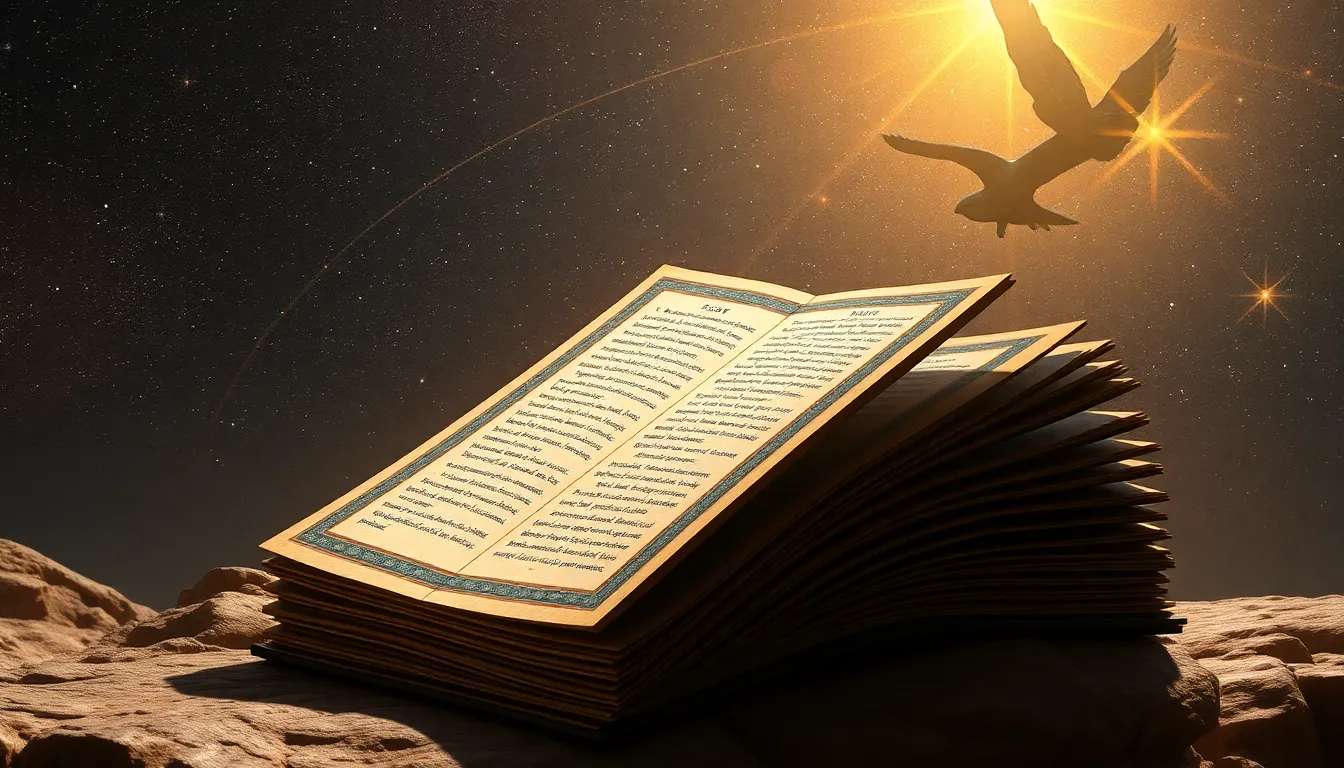The Celestial Library: Ancient Egyptian Texts on Stars and Myths
I. Introduction
Ancient Egyptian civilization is renowned for its rich cultural heritage, remarkable achievements in architecture, and profound understanding of the cosmos. The Egyptians viewed the stars not merely as distant celestial bodies but as integral components of their mythology and daily life. Astronomy played a vital role in their agricultural practices, religious beliefs, and navigation. This article aims to explore the ancient texts that illuminate the relationship between the stars and myths in Egyptian culture.
II. The Role of Astronomy in Ancient Egypt
Astronomy was essential to the Ancient Egyptians for multiple reasons:
- Agriculture: The annual flooding of the Nile was closely linked to the heliacal rising of the star Sirius, which marked the beginning of the agricultural season.
- Navigation: Celestial bodies served as guides for travelers and traders navigating the vast deserts and along the Nile.
- Timekeeping: The Egyptians developed calendars based on lunar and solar cycles, which were crucial for planning agricultural activities and religious festivals.
The alignment of temples and pyramids with celestial events further underscores the Egyptians’ astronomical knowledge. Many structures were oriented to align with the rising and setting of significant stars and the sun during solstices and equinoxes. This alignment demonstrates not only their architectural prowess but also their deep connection to the cosmos.
Key astronomical practices involved meticulous observations of celestial movements, leading to advances in understanding the solar year and the lunar month.
III. The Ancient Egyptian Pantheon and Their Celestial Connections
The Ancient Egyptian pantheon is filled with deities associated with celestial phenomena:
- Nut: The sky goddess, often depicted arching over the earth, embodies the heavens and is intricately linked to the stars.
- Isis: The goddess of motherhood and magic, associated with the star Sirius, which was believed to represent her soul.
- Horus: The falcon-headed god, linked to the sun and sky, often depicted in celestial contexts.
The myth of Nut, who swallowed the sun each evening and gave birth to it each morning, emphasizes the cyclical nature of time and celestial movements. This narrative reflects the Egyptians’ attempts to understand the cosmos and their place within it.
IV. Key Ancient Egyptian Texts on Stars and Myths
Several ancient texts provide insights into Egyptian beliefs regarding stars and myths:
- The Pyramid Texts: These inscriptions, found in the burial chambers of pyramids, contain spells and hymns that guide the deceased through the afterlife, emphasizing celestial journeys and the importance of stars in navigating the beyond.
- The Coffin Texts: These texts elaborate on myths surrounding the stars, detailing their symbolism and the role they play in the afterlife.
- The Book of the Dead: A guide for the deceased, this text includes spells that help navigate the night sky, illustrating the connection between the stars and the journey of the soul.
V. Mythological Narratives Reflecting Astronomical Phenomena
Ancient Egyptian mythology is rich with narratives explaining celestial movements:
- The Sun God Ra: The daily journey of Ra across the sky represents the cycle of life, death, and rebirth. Each night, he traverses the underworld, battling the serpent Apophis, symbolizing chaos.
- Constellations: Many constellations were personified in myths. For instance, Orion was associated with Osiris, and the circumpolar stars were linked to various deities.
These stories not only reflect the Egyptians’ understanding of the cosmos but also serve as allegories for human experiences and the natural world.
VI. The Influence of Ancient Egyptian Astronomy on Other Cultures
The astronomical knowledge of the Ancient Egyptians significantly influenced neighboring civilizations:
- Transfer of Knowledge: Egyptian astronomy laid the groundwork for the astronomical practices of the Greeks and Romans, who built upon these earlier insights.
- Impact on Greek and Roman Astronomy: Many Greek astronomers, such as Ptolemy, drew from Egyptian texts and observations, integrating them into their own systems.
- Lasting Legacies: The Egyptian zodiac and astrological concepts have echoes in modern astrology, showcasing the enduring influence of their celestial narratives.
VII. The Legacy of the Celestial Library
Preservation of ancient texts is crucial for understanding the significance of celestial knowledge:
- Archaeological Discoveries: Excavations in ancient sites have uncovered texts and artifacts that shed light on Egyptian astronomical practices.
- Modern Interpretations: Scholars continue to explore the relevance of these texts, offering insights that resonate in contemporary discussions about mythology and astronomy.
The celestial library of ancient Egypt serves as a profound testament to human curiosity and our quest to understand the universe.
VIII. Conclusion
In conclusion, the importance of stars and myths in Ancient Egyptian texts reflects a civilization deeply attuned to the cosmos. The narratives and astronomical observations encapsulated in their writings continue to captivate scholars and enthusiasts alike. As we explore the wisdom of the ancient celestial library, we are reminded of our own place within the universe and the stories that bind us to the stars.
It is essential to appreciate and delve into these ancient narratives, as they offer a glimpse into the minds of those who sought to understand the mysteries of the night sky.




